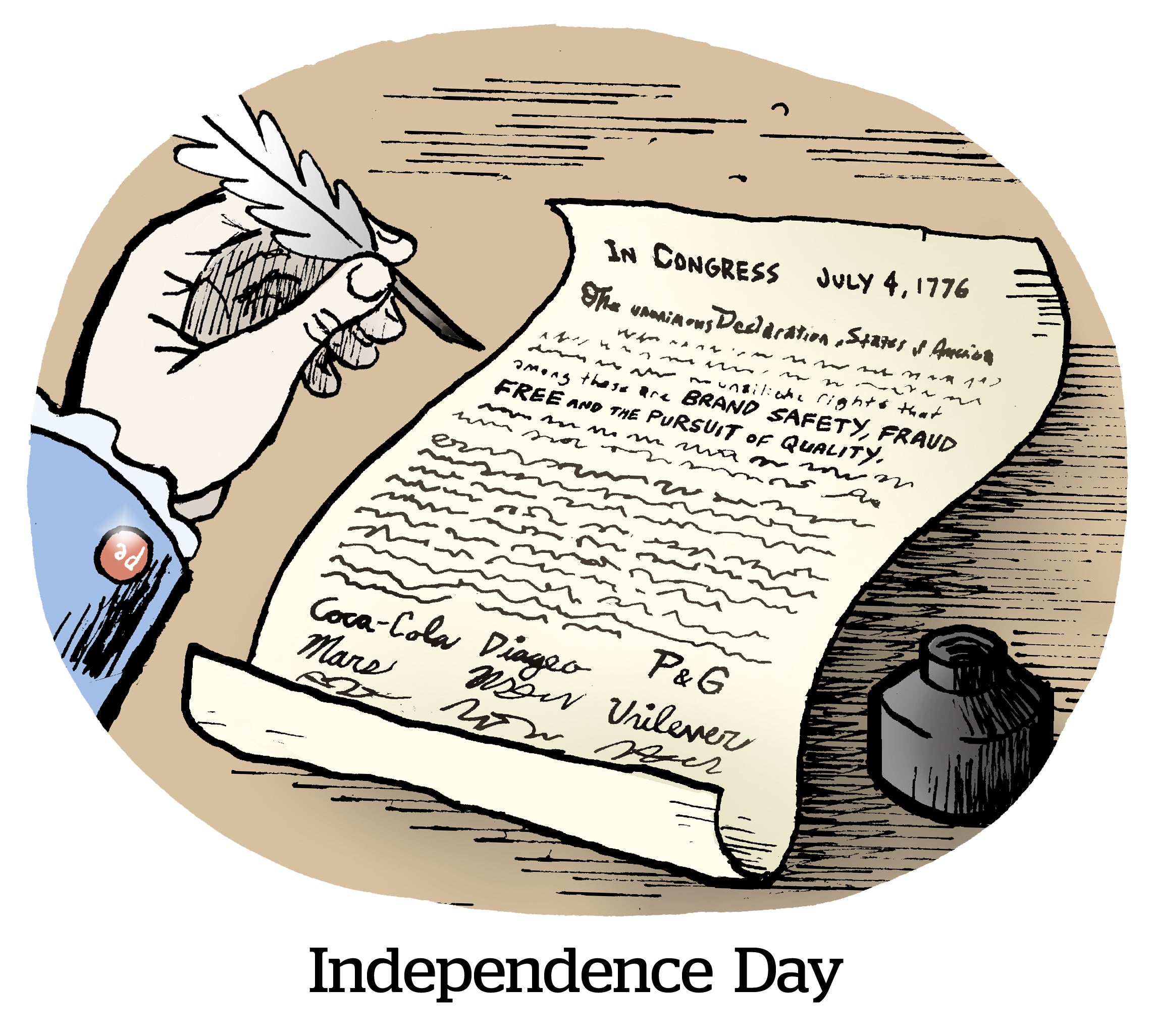Google spends so much time in the crosshairs, it basically lives there by this point.
On Wednesday – less than two months after going to town on the Google Video Partners program – Adalytics published what it says is direct evidence of personalized ads being served against kids’ content on YouTube in a follow-up to its bombshell report last week alleging the same.
Also on Wednesday, a coalition of nonprofit organizations sent a strongly worded letter to the Federal Trade Commission in response to these findings, calling for an investigation into whether YouTube and Google are, yet again, in (alleged) violation of the Children’s Online Privacy Protection Act (COPPA).
The coalition is being led by the Center for Digital Democracy and Fairplay (previously known as the Campaign for a Commercial-Free Childhood), both of which were behind a previous successful complaint against YouTube over alleged COPPA violations that led to a $170 million settlement between Google, the FTC and New York state in September 2019.
But this group is not the first to contact the FTC about this issue. Sens. Ed Markey (D-Mass.) and Marsha Blackburn (R-Tenn.) sent a joint letter last week after the first report dropped demanding an FTC investigation into YouTube and Google for suspected violations of children’s privacy.
Obligations
But to rewind, what’s in that 2019 settlement?
August is beach season, and if you need some beach reading, you can access the full 2019 consent order here.
The TL;DR is that Google and YouTube are required to get verifiable parental consent before collecting personal information from children.
On the same day the settlement was filed, YouTube’s then CEO, Susan Wojcicki, published a blog post to say that, going forward, YouTube will assume that anyone watching children’s content on the platform is a child and treat them accordingly – regardless of their age – and that YouTube will also “stop serving personalized ads on this content entirely.”
The Adalytics report alleges that Google does neither effectively. And now it says it’s got the receipts to prove it.
In Google’s vehement rebuttal of the original Adalytics report last week, it states that YouTube has prohibited ads personalization on “made for kids” content since January 2020.
Yet, according to Adalytics, it’s not only possible but relatively easy to set up YouTube campaigns in Google Ads that allow ads for adult-focused products like insurance, cars and SaaS technology to run against content designed for children.
Adalytics ran an experiment with multiple media buyers demonstrating that with a few clicks anyone with a credit card and a self-serve Google Ads account can configure campaigns so 100% of the impressions are targeted at an adult segment such as business travelers, for example, or avid investors.
The experiment involved setting parental status to “unknown” or “not a parent,” excluding placements on the Google Video Partner network and uploading an inclusion list of “made for kids” YouTube channels to use as the campaign target.
In theory, not a single one of these personalized ads should have shown up on a “made for kids” video.
But the reporting pulled from the Google Ads dashboard and shared with Adalytics appears to show otherwise.
Toddlers don’t have credit cards
There’s an even easier experiment to run, however.
All one has to do in order to find adult-focused ads running against kid-focused content is to click on a kid-focused YouTube video.
To be fair, there are non-personalized ads that run on kid channels. I was served an ad for Barbie (the doll, not the movie) on Vlad & Niki and an ad for a kids’ math game on Sheriff Labrador – and that’s completely fine. Contextual advertising is fair game, even according to the FTC.
But over the course of roughly 10 minutes on Tuesday evening, I was also served an ad for Optimum on the Ryan’s World channel, for Shopify on JJ’s Animal Adventure (made by the same folks as Cocomelon) and another ad for Optimum on Kids Diana Show.
This would appear to be a violation of Google’s own stated policies for what type of ads can run against “made for kids” content on YouTube.
And AdExchanger spoke with four media buyers that have also personally observed behaviorally targeted ads served on “made for kids” channels.
In a statement, a Google spokesperson said that the conclusions in the Adalytics report “point to a fundamental misunderstanding of how advertising works on made for kids content.”
“We do not allow ads personalization on made for kids content and we do not allow advertisers to target children with ads across any of our products,” the spokesperson said. “We also do not offer advertisers the option to directly target made for kids content as a whole.”
The findings were not shared with Google in advance, and the spokesperson said that Google reached out to Fairplay directly to “clarify what they saw and share how our protections work.”
Google also noted that advertisers have the ability to fully opt out of their ads running against “made for kids” content on YouTube.
Harmful, wasteful or both?
But putting aside concerns related to collecting data from children under 13 or the moral question of whether children should be shielded from certain commercial messages, it arguably doesn’t make much sense from a marketing perspective to target ads for high-speed fiber internet or ecommerce platform technology at kids that are probably in the first grade or still in diapers.
“I feel for advertisers here, because this isn’t just a legal risk – it’s a waste of advertising dollars,” said Laura Edelson, an incoming assistant professor of computer science at Northeastern University and former CTO for the antitrust division of the Department of Justice.
One possible explanation for why adult-targeted ads continue to run against “made for kids” YouTube content is because parents are watching with their kids.
But as Adalytics points out in its follow-up report, co-viewing doesn’t negate the fact that Google has said it treats data from anyone watching children’s content on YouTube as coming from a child, regardless of how old the viewer is.
A more cynical, and perhaps logical, explanation is that kid-focused content generates a lot of impressions (as anyone who’s been subjected to Baby Shark is well aware of), and YouTube needs to fulfill demand. (P.S. An ad for Verizon ran before the Baby Shark video when I clicked on it.)
“Human attention is finite, right? And there are only so many people out there,” said a senior media executive, who asked to remain anonymous so as to speak freely. “You’ve gotta get those ad slots filled somehow.”
So, what’s an advertiser like Verizon, Optimum or Shopify to think of all this?
Either brands can’t trust the efficacy of the targeting settings on Google’s platforms, Google is filling behavioral segments with random inventory – including kids’ content – to meet demand or Google is violating its COPPA commitments, said Ruben Schreurs, chief strategy officer at Ebiquity.
None of the options are awesome.
“And in the first case, it doesn’t just lead to wasted ad investments, but also inadvertent exposure to serious compliance and brand reputation risks,” Schreurs said. “Google will have to do better than trying to disregard the Adalytics allegations without proper counterevidence.”
Story updated at 9:22 a.m. to include comments from Google.





















